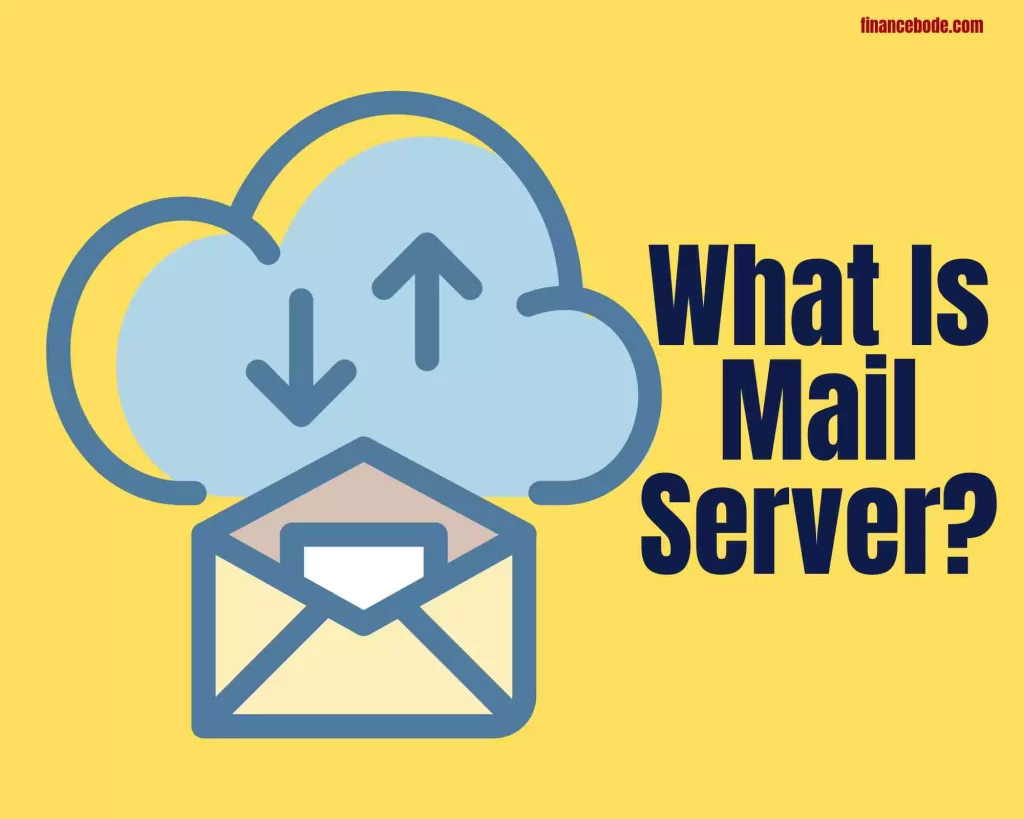
As email marketing becomes more popular, this business does not regularly mention the concept of a Mail Server (or Email Server).
You can send emails from anywhere globally to another in seconds with just one click. Most of us conduct this procedure arbitrarily without really thinking about how this thing gets done in a matter of seconds. This is where mail servers come in.
A Mail Server is a server or program that handles email messages, responsible for receiving and sending emails.
In this post, I will cover what a Mail Server is, the many kinds of Email Servers, how emailing works, the difference between a Mail Server and an SMTP Server, and the variables to consider when selecting an Email Server.
What Is A Mail Server?
An email Server or Mail Server is used to deliver and receive an electronic message (Email). As a professional email solution for internal communication, interaction with clients and external partners has to demand consistency and continuity with rapid speed while assuring data protection, ability, High data recovery…
An email Server is a physical or cloud server configured to transform into a computer to send and receive email. It also contains all the exact specifications of a standard Server, such as Ram, CPU, storage space, etc. In addition, it also offers additional criteria linked to Email aspects such as the Number of Email Accounts, Number of Emails: forwarder, and Mail list.
Using the mail server system will minimize and avoid various difficulties such as mail with viruses, spam, being banned, or being unable to check webmail, …
Types of Email Servers
Mail servers may be classed into Outgoing servers and Incoming Servers.
Incoming email server
The incoming server saves the message and delivers it to the user’s inbox. It contains two primary protocols: POP3 and IMAP.
What is POP3?
Post Office Protocol 3 (POP3): This protocol downloads email from a server and stores it on the device. After the user opens the email client and downloads the message, the email is immediately erased from the mail server. Several internet service providers give consumers POP3 email accounts because they save space.
What is IMAP?
Internet Message Access Protocol (IMAP) enables users to examine, remove, and arrange messages before sending them out. Copies of emails are maintained on the server until the user deletes them.
Outbound email server
The outgoing mail server connects to the user’s email client over a basic mail transmission protocol containing a Simple Mail Transfer Protocol (SMTP) primary protocol.
What is SMTP?
SMTP, Simple Mail Transfer Protocol, is the etiquette used to transmit outgoing mail (Outgoing Mail servers). Particularly, SMTP Server works with POP3 or IMAP to deliver outbound emails.
Terms Related To Mail Server
Before diving deeper into mail servers, let’s go over some essential mail server words.
What is TLS?
TLS is Transport Layer Security that works with Secure Sockets Layer (SSL) to offer an encrypted transport route for SASL authenticated logins.
What is SASL?
SASL is a Simple Authentication and Security Layer (Simple Authentication and Security Layer) for authenticating users. SASL handles the authentication, and then TLS offers encrypted transit of the authentication data.
What is Webmail?
Webmail is web-based email. You regularly see several webmails like Hotmail, google, and yahoo mail. Webmail enables users to access email at any time.
Why Is A Mail Server Important?
For email communication, a mail server is really important. You would need it to send or receive emails. It is responsible for sending your message to the target recipient and ensuring it is safe and secure from danger.
Other functions offered by mail servers include email filtering, anti-spam measures, and virus screening. These features assist in securing your email communication from unwanted information and harmful assaults. They also guarantee the dependability and security of your email exchanges.
Mail Server Classification
What is Mail Server Microsoft, Google?
Mail servers Microsoft and Google are two powerful brands representing this service. The platform for developing this mail server has a big size and rigorous security mechanism. Can handle existing data properly.
Users may utilize numerous different tools. That is why the cost of employing this form of mail server service is typically fairly expensive. Examples: Email 365 (Microsoft), G Suite (Google),….
What is Standalone Mail Server?
Standalone Mail Server is a Mail Server solution developed for enterprises or ISPs that handle vast amounts of mail, demanding greater control and flexibility over mail services.
It includes capabilities like collaboration, Outlook sync, remote administration, Webmail and more powerful Web Administration, and database connection, providing you with the power and control you need for your operations—large-scale movement.
How Does Emailing Work?
Now that you know the fundamentals of incoming and outgoing mail servers, it should be easy to grasp the function they play in email delivery.
The fundamental phases of the email-sending process are as follows:
Step 1: After creating a message and clicking send, your email software – whether Outlook Express or Google – will connect to the domain’s SMTP server. Several names may name this server; for example, a popular name might be smtp.example.com.
Step 2: Your email client will connect with the SMTP server — supplying the recipient’s email address, email address, message content, and any attachments.
Step 3: The SMTP server will process the recipient’s email address – especially its domain name. The message will be delivered directly to the domain’s POP3 or IMAP server without routing if the domain name matches the sender’s. But, if the domain names are different, the SMTP server will have to contact the other domain’s server.
Step 4: To discover the recipient’s server, the sender’s SMTP server must contact the DNS or the Domain Name Server. DNS takes the recipient’s email domain name into an IP address. The sender’s SMTP server cannot route an email that matches just one domain. Knowing this information allows an outgoing mail server to execute its work more effectively.
Step 5: Now that the SMTP server knows the recipient’s IP address, these IP addresses may connect to the SMTP server. This usually is not done directly; instead, the message is routed around a succession of unconnected SMTP servers until it reaches its destination.
Step 6: The recipient’s SMTP server will scan the inbound message. It will forward the message to the domain’s POP3 or IMAP server if it identifies the domain and user name. From there, it is stored in the sendmail queue until the recipient’s email software approves the download. Eventually, the receiver may read the message.
How To Perform Mail Server Administration
There are 6 stages in total for an email-sending process in the Mail Server system:
Step 1: Compose and send. It may be Outlook Express or Google. Then the email will connect to your domain SMTP server.
S tep 2: The email you send will interact with the SMTP server.
Step 3: The SMTP server will look for the domain name specified by the sender.
Step 4: The sender’s SMTP server will interact with the DNS or domain name server to discover the recipient’s server. DNS takes the recipient’s email domain name into an IP address.
Step 5: After the SMTP server has gotten the recipient’s IP address, it may connect to another SMTP server.
Step 6: The recipient’s SMTP server will scan the incoming message. If the domain name and username match, it will immediately send a message to the user.
Benefits of mail server administration
This method provides several significant advantages. Currently, the job of a Mail Server is highly substantial in email marketing. With the function of virtually a location to communicate information between companies and their consumers and, at the same time, a place to keep data safe. In addition, employing this method also helps consumers gain the following benefits:
– Enabling colleagues in the same firm and organization to communicate information swiftly and securely.
– Enables users to send or receive mail through the Internet directly using particular domain names of each company.
– Minimize the likelihood of obtaining spam or malware.
– Thoroughly protect the confidentiality of internal information.
– May specify the maximum capacity for each Mail Server user.
– Control all email content of all members of the system.
– Set up an automatic data backup feature. Ensure sure the essential information is constantly accessible.
– Capable of managing massive quantities of emails every day.
– There is a different server. mail server administration
– Employees can change their own password.
– Check and manage the email content of employees in the company.
The email server has highly effective antivirus and spam mail capabilities.
Can check mail on both webmail and Outlook Express.
Difference Between A Mail Server And SMTP Server
SMTP Server is responsible for processing outgoing email, while Mail Server is a software that manages network resources. SMTP Server is not a Mail Server.
For certain mass email service providers like Amazon SES, Sendgrid, Sparkpost, and Elastic email, SMTP servers are required. When the receiver answers, you can’t check the messages on these services, but you must sign in to the email account you have set up.
In contrast, the Mail Server gathers email, processes it, and serves it to email clients. The mail server hosts services from POP3, IMAP, SMTP, Exchange, etc.
Factors To Consider When Choosing An Email Server
After learning what is the notion of a Mail server. A business that wishes to pick an email server should keep the following in mind:
Security: Email security is of vital significance, mainly if sensitive information is being communicated by email. Select an email server that offers secure connections, encryption, and spam filters to keep your messages and data safe.
Scalability: An email server should be able to expand with your company’s demands as the number of email users and messages rises.
Reliability: Pick an email server that has a solid uptime record and delivers dependable service. Downtime might result in lost production and income.
Expense: Physical email servers often have greater upfront renting fees. But, it does allow greater granular control over the security system. Cloud-based services often have cheaper upfront expenses and need less upkeep.
Storage; Ensure sure the service gives adequate space for email storage. Some services may additionally include an option to automatically migrate old messages to the archive.
Compatibility: Verify that your email server is compatible with the email clients and devices used in your business.
Support: Pick an email server that offers vital customer service, including technical assistance and aid with setup and maintenance.
Conclusion
In summary, an email server is a fundamental component of the email communications system, responsible for receiving and delivering email messages. There are numerous sorts of email servers, including incoming and outgoing servers, and it’s crucial to pick the proper one based on aspects such as security, scalability, dependability, compatibility, and support.
When picking an email server, it’s crucial to analyze your company’s unique demands and locate a solution that fulfils those needs. With the correct email server, you can guarantee that your email communications are safe, efficient, and dependable, enabling your organization to work quickly and successfully.
FAQs
Q: What is the difference between a mail client and a mail server?
A: A mail client is an application used to send and receive emails, whereas a mail server is a computer program responsible for processing emails.
Q: Can I set up my mail server?
A: Sure, it’s feasible to set up your mail server
Q: What is a mail server in simple words?
A: A mail server is a computer software responsible for coordinating the sending and receiving of emails across multiple email accounts.
Q: How can I discover my mail server?
A: You may locate your mail server by checking your email program settings or contacting your service provider.
Q: What is the mail server for Yahoo?
A: The inbound mail server for Yahoo is imap.mail.yahoo.com, and the outgoing mail server is smtp.mail.yahoo.com.
Q: Is Gmail a mail server?
A: Indeed, Gmail is a mail server hosted by Google.
Q: Which mail server is best?
A: The ideal mail server for you will rely on your demands and requirements. Some central mail servers are Microsoft Exchange, Zimbra, and Postfix.
Q: Can I operate my own email server?
A: Sure, hosting your own email server is feasible, but it involves technical knowledge and skill.
Q: How can I discover my mail server on Gmail?
A: You can locate your mail server settings in the Gmail settings under “Forwarding and POP/IMAP.”
Q: How can I link my mail server to Gmail?
A: You may connect your mail server to Google by configuring your Gmail account’s POP or IMAP settings.
Q: How can I connect to my Yahoo Mail server?
A: You may connect to your Yahoo Mail server by adjusting your email client’s incoming and outgoing mail server settings.
Q: What is the Yahoo incoming and outgoing mail server?
A: The inbound mail server for Yahoo is imap.mail.yahoo.com, and the outgoing mail server is smtp.mail.yahoo.com.
Q: How do I fix email not connecting to a server?
A: You may address email connection difficulties by checking your internet connection, validating your email server settings, and deactivating any firewalls or antivirus software that may be preventing the contact.
Q: How can I know the incoming and outgoing mail servers?
A: You may discover your incoming and outgoing mail server settings in the settings area of your email program or by contacting your email service provider.
Q: Why is my Yahoo email not connecting to a server?
A: Yahoo’s wrong server settings, obsolete software, or network connectivity problems might cause email connection troubles.
Q: What email uses POP3?
A: POP3 is a protocol used by numerous email clients, including Outlook, Thunderbird, and Apple Mail.
Q: What sort of email utilizes IMAP?
A: IMAP is a protocol used by numerous email clients, including Google, Yahoo, and Apple Mail.
Q: Is Yahoo Mail POP or IMAP?
A: Yahoo Mail supports both POP and IMAP protocols for receiving emails.




